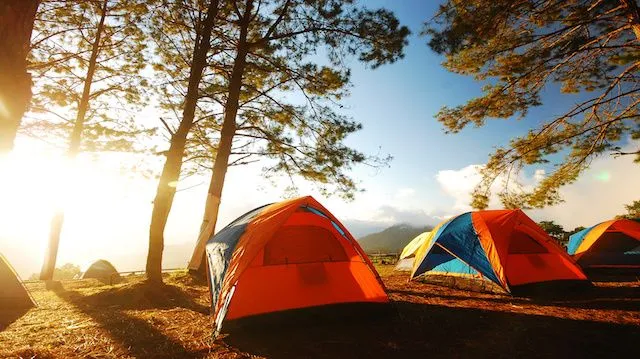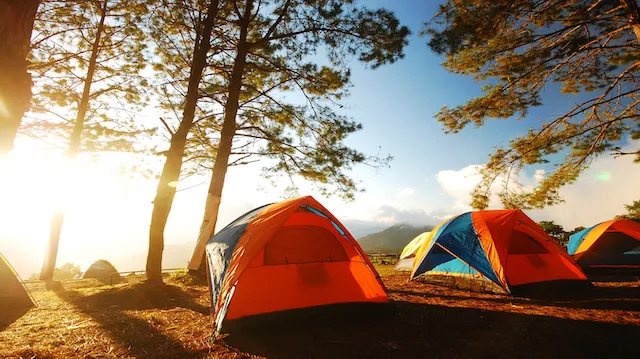
- Share on Facebook7
- Share on Pinterest
- Share on Twitter
If you are an avid hiker or outdoorsman, you obviously know how much fun can be had in the woods, on the side of a mountain or at the lake. There are so many interesting ways to enjoy nature, but nature can be harsh as well as beautiful.
It pays to be aware of the ways in which your excursion can go wrong. Always know the danger and plan ahead.
Every time I have gone to a national park or visited a place like the Grand Canyon, I have heard stories from trail guides and park rangers about how many people get hurt or killed every year because of silly mistakes. Sometimes people were being blatantly foolish and ignoring safety signs, but more often than not, they were simply not prepared for or aware of the unforgiving side of nature.
If you answer the call of the wild and can be found out in the woods more easily than in your own home, then you are probably aware of the dangers and used to taking the necessary precautions.
However, if you have not grown up in the woods or spent much time there, then pay attention. I am about to give you some tips that could make the experience more enjoyable — and possible save your life.
What should I bring?
I have often heard people ask about the number one tool to take with them into the woods or wilderness. People expect answers like a gun or a machete.
The first thing that I always take before anything else is…
Water
I live in northern Arizona. I am at an elevation between 7,000 and 10,000 feet above sea level. It usually doesn’t get too hot here, but it is very dry. The air is also much thinner up here, so people tend to run out of breath faster. Elevation can dehydrate you just as fast as being in the desert can, and the problem is that you won’t realize it!
You can last for weeks on little or no food, but if you run out of water, you may not last more than a few days.
Water bottles are a good way to carry your water, but they can be cumbersome and hard to keep track of.
My recommendation is backpack-style water carriers. They generally consist of a shoulder pack with a rubber bladder inside. A hose travels from the pack over your shoulder, and you suck the water out through the hose.
Such packs vary in size, but they generally hold two to three liters or more, and the bladders can be removed and placed inside of almost any hiking pack or backpack.
Knife
While you can make it through an entire hiking trip without ever touching your knife, a knife can do so many useful things that it’s foolish not to have one with you.
As a kid, I always thought that I should take a knife on hikes for self-defense against wildlife. This is one use, but to be honest, a knife is probably not going to help very much in the event of a wildlife attack.
Knives can be used for cutting wood, stripping leaves or bark, prying open cans of food, striking a flint, cutting cloth for bandages… the list of uses is endless.
You can get many different kinds of knives. I personally prefer a good quality folding knife that I can clip to the lip of my pocket. These are a bit easier to carry than fixed blade belt knives and can usually do all of the same things and more.
Make sure it’s sharp! You can find compact knife sharpening kits at most outdoor outfitter stores or in the kitchen department of a regular grocery store.
Compass and map
A decent compass is very useful, but you need to know a bit about compasses for it to do you any good. The main thing about compasses is that they point north. Now you may ask: “But if I don’t even know where I am, why should I care about which direction is north?”
A compass has many uses in navigation, but the easiest one to take advantage of is that it will keep you on track. If you rely on your own sense of direction to get you out, you will wind up going in circles. Most people watch their feet as they walk, and this tends to make them veer one way or the other. A compass will help you keep heading in the right direction. Or at least one direction.
A map can be the difference between wandering around for days and getting out before dark. Study your map! Keep it safe and dry. Make sure to have an exit plan and know the route you’re taking.
Fire
Fire can be dangerous, but in a survival situation like being stranded in the woods for several days, it can mean the difference between life and death, especially in the colder months.
You can bring the obvious things like matches or lighters, and these are the best bet you have. However, if you forget to store the matches in a waterproof container or run out of lighter fluid, you may wish you had another option.
You can get a flint and steel at any wilderness outfitter and most sporting goods stores. Instructions should be included.
You can also use the old magnifying glass trick if there is sun. You don’t have to use an actual magnifying glass. Binoculars can work also. In fact, I have even seen people use chunks of ice that they shaped into lenses by melting the surface with their hands in strategic ways.
There are other more complicated methods, but these will get you started.
Always have a way to start a fire.
First aid materials
 This can be an actual kit or just separate components. The basics are sterile gloves, Band-Aids or bandages, cloth tape or rope to bind wounds and make splints, alcohol pads to sterilize cuts and scrapes, and any other materials that might be needed if a member of the group has extra health problems like diabetes or heart trouble.
This can be an actual kit or just separate components. The basics are sterile gloves, Band-Aids or bandages, cloth tape or rope to bind wounds and make splints, alcohol pads to sterilize cuts and scrapes, and any other materials that might be needed if a member of the group has extra health problems like diabetes or heart trouble.
These are only a fraction of the helpful tools that people can take with them to make hiking or camping a safer experience, but they are some of the most important. With these tools, you can stay alive long enough to be found by search parties or find your own way home.
Remember to always tell someone where you are going and when you plan to be home. Be safe out there, and enjoy nature as it was intended to be enjoyed!
—Kyle Kramer
Kyle is an outdoor enthusiast with a passion for nature and sustainability. When he is not writing, you will find him in his workshop crafting with local wood, hiking in the Arizona mountains, fly fishing, horseback riding or putting together a healthy meal in the kitchen.
Sources:
http://www.theclymb.com/stories/tips/10-tips-for-wilderness-survival
http://www.popularmechanics.com/adventure/outdoors/tips/a3114/how-not-to-die-20-survival-tips-you-must-know-16030884
http://www.survivaloutdoorskills.com/survival_tips.htm
- Share on Facebook7
- Share on Pinterest
- Share on Twitter

